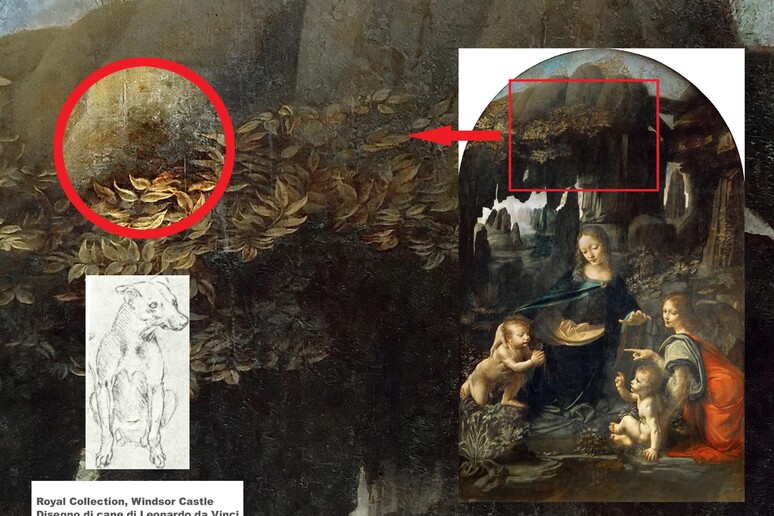Renaissance genius Leonardo da Vinci
painted a so-far-undiscovered dog into the background of one of
his most iconic masterpieces to subtly condemn the corrupt
papacy of his time, one of Italy's top art experts said
Thursday.
Silvano Vinceti, the president of the national committee for
the valorization of historic heritage, said a dog with a lead,
symbolising faith in Jesus's original message, had been detected
behind the master's famed Virgin of the Rocks in the Louvre.
"That dog is an act of indictment by Leonardo da Vinci
against the corruption of the papacy of the age," said Vinceti.
Vinceti, who was at the centre of the finding of
Caravaggio's bones at Porto Ercole and the remains of the model
for Mona Lisa in Florence in recent years, said the discovery
was made by Roberto Biggi, a researcher for the committee.
The dog was detected behind vegetation in the backdrop of the
masterpiece.
"We achieved this result with a new work (method), via the
use of a mix of the most advanced technologies and simple
instruments," he explained.
"A special magnifying glass enabled us to carefully examine
every feature of the painting and then an advanced photoshop
software enabled us to overlay, decompose and recompose it".
The dog peeping out from the vegetation, Vinceti said,
"enables us to give a wholly different reading of the Virgin of
the Rocks".
He said that "for Leonardo the dog has a precise meaning, 'no
to disobey', as he himself writes in one of his folios. The
leash, then, is an addition because it represented in medieval
and Renaissance hunts the tool that enabled the feudal lord to
stop dogs eating the prey.
"For Leonardo, therefore, the dog on a leash is the symbol of
man who must obey God, the divine Commandments, Jesus, the life
that Jesus perfectly embodied to express Christian love".
The discovery, therefore, consolidates an interpretation of
Leonardo as the depository of a rigorous religious belief.
"Up till today his paintings have been addressed from the
standpoint of technique and painting style," Vinceti said, "but
we have lost sight of the fact that Leonardo, through the
composition of his paintings, achieved a narration, expressed a
thought that becomes image.
"When he writes 'painting is the beautiful that clothes the
truth' he clearly indicates his intentions.
"Leonardo certainly could not express certain criticism
against the Papacy, because back then there were Innocent VIII,
Alexander VI, the Borgia popes and above all the Inquisition".
Hence the idea that Leonardo chose to voice his criticism of
the papacy of his time via iconographic language:
"That dog on a leash above St John the Baptist in the
composition is the indictment that Leonardo makes of the
corruption of the papacy back then which privileged temporal
power over spiritual power," Vinceti concluded.
"Leonardo uses the painting to express his thought and
request for a rigorous Christianity that may revive the example
of God for the Commandments and Jesus as expressed in the
Gospels".
ALL RIGHTS RESERVED © Copyright ANSA











